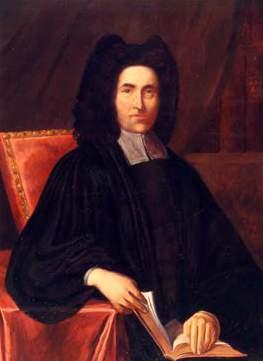
2 minute read
Thomas Bray takes a digital journey
by USPG
ISSUE 1 2020
Drawing of Thomas Bray’s birthplace. Credit: SPCK
I think there’s a tendency for us in the Anglican and wider Christian world to think about what we’re doing only within those confines Letters Thomas Bray wrote 300 years ago will be made accessible to the public, thanks to a project spearheaded by USPG’s Research and Learning Advisor Dr Jo Sadgrove.
The Arts and Humanities Research Council (AHRC) recently agreed to provide funding to enable Dr Jo Sadgrove (of USPG and the University of Leeds) to digitise some of Thomas Bray’s original letters from the USPG archive. These will be hosted on USPG’s website and on the University of Leeds website, where everyone will be able to see them. ‘If anyone wants to know about what USPG was and how it started, this will enable that to be illuminated a little bit,’ Jo said.
The project came about as a result of work Jo has been doing since 2017, on the link between religion and health. The University of Leeds asked Jo to work with them and Public Health Leeds, to investigate how churches, mosques and temples could be used to disseminate health messages. Jo has been working with Dr Alison Searle, an academic. Together, they have studied links between religion and health, looking at how faith communities have acted as historic and contemporary care providers. Letters that Thomas Bray wrote and received during that period show that one of his aims was to extend care to people in different places, particularly in the American state of Maryland, where much of his ministry was focused.
‘There’s a big database called Early Modern Letters Online, which puts letters from a given time period into a database,’ Jo explained. ‘As you read through them, you can see connections; people communicating with each other. So instead of seeing Thomas Bray as one man who created USPG on his own, you have a fuller picture of him and the organisation. You discover who was influencing him as you see who he was writing to and what he was writing to them about.’
Jo hopes that what this project will give other scholars a better picture of what USPG is and does. ‘I think there’s a tendency for us in the Anglican and wider Christian world to think about what we’re doing only within those confines,’ she said. ‘Our conversations tend to be with the Church of England or the Anglican Communion. But actually, this came in a time period where lots of different people were thinking about the same questions. This project will do is put the sources online in a way that people can see them.’

Painting of Thomas Bray Credit: USPG










